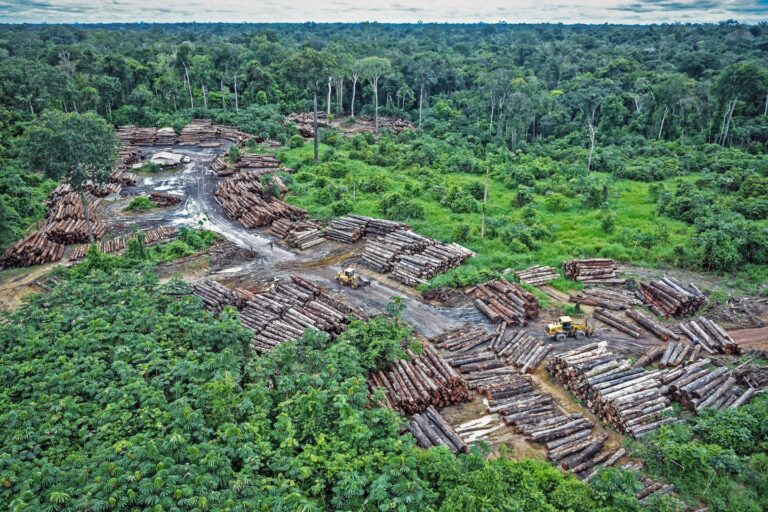Roudi Baroudi: Μπλε οικονομία στη Μεσόγειο

Οι χώρες της Μεσογείου πρέπει να είναι από τους μεγαλύτερους νικητές στη μετάβαση από τα ορυκτά καύσιμα στις ανανεώσιμες πηγές ενέργειας, δήλωσε ειδικός σε θέματα ενέργειας την Τετάρτη σε ένα βασικό συνέδριο πολιτικής.
«Εδώ στην περιοχή της Μεσογείου, η μετα-άνθρακα εποχή έχει στην πραγματικότητα τεράστιες ευκαιρίες όσον αφορά την μπλε οικονομία», δήλωσε ο βετεράνος της βιομηχανίας Roudi Baroudi στο εικονικό All Things Energy Forum. Πρόσθεσε ότι ενώ η συμβατική αιολική και ηλιακή ενέργεια θα έχουν «βασικό ρόλο να διαδραματήσουν», η εγγύτητα της θάλασσας προσέφερε μια άλλη διάσταση.
“Υπάρχουν και άλλες πολλά υποσχόμενες ενεργειακές τεχνολογίες, όπως η βροχή, τα κύματα και η παλιρροϊκή ενέργεια, καθώς και η υποθαλάσσια γεωθερμία”, δήλωσε ο κ. Baroudi, ο οποίος έχει διετελέσει σύμβουλος σε κυβερνήσεις, πολυμερείς οργανισμούς και μεγάλες διεθνείς εταιρείες για την ενεργειακή πολιτική.
«Μερικές από τις πιο υποσχόμενες αντικαταστάσεις για τα ορυκτά καύσιμα περιμένουν στη θάλασσα, αν μόνο έχουμε τη σοφία και την προνοητικότητα να τις αναπτύξουμε».
Η μεγάλη εγγύτητα μιας μεγάλης θάλασσας όπως είναι η Μεσόγειος δίνει στα παράκτια κράτη της βασικά πλεονεκτήματα σε σχέση με άλλα κράτη που είναι εγκλωβισμένα στην ξηρά, εξήγησε, επειδή έχουν πολλές περισσότερες επιλογές για παραγωγή ηλεκτρικής ενέργειας χαμηλής ή χωρίς άνθρακα.
Ο 40χρονος βετεράνος της περιφερειακής ενεργειακής σκηνής προέβλεψε ότι με ισχυρή ηγεσία, οι περιφερειακές χώρες θα μπορούσαν να χρησιμοποιήσουν αυτό το δυναμικό για την πλήρη ηλεκτροδότηση όλων των κατοικημένων περιοχών τους.
Αυτό το είδος πρόσβασης, στην ηλεκτρική ενέργεια, αποτελεί βασική προϋπόθεση για το είδος της οικονομικής ανάπτυξης που θα βοηθήσει εκατομμύρια ανθρώπους – ακόμη και δεκάδες εκατομμύρια – από τη φτώχεια», δήλωσε.
«Θα μειώσει επίσης τη ροή των Αφρικανών μεταναστών που δεσμεύονται για την Ευρώπη δημιουργώντας νέες οικονομικές ευκαιρίες για αυτούς στην έδρα τους».
Ο κ. Baroudi προειδοποίησε, ωστόσο, ότι παρέμειναν σημαντικά εμπόδια εάν η περιοχή επρόκειτο να πραγματοποιήσει το πλήρες δυναμικό της για υπεράκτια παραγωγή ενέργειας, κυρίως επειδή περίπου τα μισά από τα θαλάσσια σύνορα της Μεσογείου παραμένουν αδιευκρίνιστα.
Όπως και με τις προοπτικές για υπεράκτιο φυσικό αέριο, εξήγησε, οι επενδυτές αποφεύγουν τέτοια διαφιλονικούμενα σύνορα επειδή η αμφισβητούμενη ιδιοκτησία μιας περιοχής ενέχει πολύ μεγάλο κίνδυνο. Για αυτόν τον λόγο, είπε, και επειδή η πίεση χτίζεται για μορατόριουμ για την ανάπτυξη νέων πεδίων πετρελαίου και φυσικού αερίου, οι περιφερειακές χώρες χρειάστηκαν να υιοθετήσουν τη διπλωματία και να καταρτίσουν συνθήκες που ορίζουν τις αντίστοιχες αποκλειστικές οικονομικές ζώνες τους.
Δεδομένου ότι το φυσικό αέριο αναμένεται να παραμείνει βασικό καύσιμο μετάβασης για τουλάχιστον δύο δεκαετίες, εξήγησε, περιφερειακές χώρες θα μπορούσαν επίσης να κερδίσουν δισεκατομμύρια έσοδα από υπεράκτιες καταθέσεις – αλλά ορισμένες εξακολουθούν να χρειάζονται συμφωνίες ΑΟΖ για να ξεκινήσουν.
Δεν υπάρχει ανάγκη να είναι πιο πιεστική, ειδικά επειδή ο διάλογος και οι συμβιβασμοί που απαιτούνται όχι μόνο θα ανοίξουν την ανάπτυξη του φυσικού αερίου, αλλά θα έθεταν επίσης τα θεμέλια για στενότερη συνεργασία σε άλλους τομείς – αυτό ακριβώς απαιτεί η Μπλε Οικονομία για να αξιοποιήσει πλήρως τις δυνατότητές του», δήλωσε ο κ. Baroudi, ο οποίος είναι επί του παρόντος διευθύνων σύμβουλος της Energy and Environment Holding, ανεξάρτητης συμβουλευτικής εταιρείας στη Ντόχα.
Τα πλεονεκτήματα από την ηρεμία στη Μεσόγειο
«Ως μπόνους, μια πιο ήρεμη, φιλικότερη Μεσόγειος θα επέτρεπε επίσης την κατανομή ευθυνών και τη συγκέντρωση πόρων και δεδομένων, τα οποία θα βελτιώσουν σημαντικά τα αποτελέσματα σε όλα, από τη μετανάστευση, την πρόγνωση καιρού και την αναζήτηση και διάσωση σε συστήματα προειδοποίησης για τσουνάμι και την προστασία καλωδίων επικοινωνίας», είπε.
«Τότε θα μπορούσαμε απλώς να δούμε ολόκληρη την ευρωμεσογειακή περιοχή να γίνει ένας από τους καλούς γείτονες, ένα μέρος αμοιβαίων στόχων, διευθετημένων παραπόνων και ακόμη και γεωστρατηγικής συνεργασίας.
Τολμώ να το πω, κυρίες και κύριοι, η Μεσόγειος θα μπορούσε να είναι απόλυτα ειρηνική στη ζωή μας”.
Η εκδήλωση, της οποίας οι ομιλητές περιελάμβαναν διακεκριμένους ακαδημαϊκούς και ανώτερους ηγέτες επιχειρήσεων και ενέργειας, καθώς και βασικούς κυβερνητικούς υπουργούς, πραγματοποιήθηκε την Τετάρτη.
Ο Roudi Baroudi έχει περισσότερα από 40 χρόνια εμπειρίας στον τομέα της ενέργειας και βοήθησε στη χάραξη πολιτικής για μεγάλες διεθνείς εταιρείες πετρελαίου, κυβερνήσεις και πολυμερείς θεσμούς. Σήμερα υπηρετεί ως Διευθύνων Σύμβουλος της Ενέργειας και Περιβάλλον Διαθέτοντας ανεξάρτητη συμβουλευτική εταιρεία.








